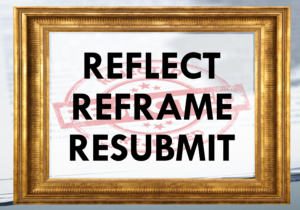Don’t Let Your Research Questions Go Out Without PICOTS
 All the best aims are wearing PICOTS (pronounced “peacoats”). Specification of your PICOTS* is the minimum outerwear required to prevent your research question from being caught in a downpour of questions. Having these details tucked in gets you ready to have a meaningful conversation with colleagues, evaluate feasibility, brainstorm about how to get the best study done, and prepare to share your concept:
All the best aims are wearing PICOTS (pronounced “peacoats”). Specification of your PICOTS* is the minimum outerwear required to prevent your research question from being caught in a downpour of questions. Having these details tucked in gets you ready to have a meaningful conversation with colleagues, evaluate feasibility, brainstorm about how to get the best study done, and prepare to share your concept:
P = Population
I (E) = Intervention (Exposure)
C = Comparator
O = Outcome
T = Timing
S = Setting
Use PICOTS as a checklist for operationalizing research questions and probing how the research would shape up under different assumptions. Ask:
Population:
- What group of participants is ideal?
- Whom does this imply we need to include or exclude?
- How would we operationalize those criteria?
- What influence will that have on ability to identify participants/recruit well?
- Do we need to worry about proof of concept or generalizability more at this stage?
Intervention:
- What will participants do/experience in the study that is being tested for its effects?
- What dose, frequency, intensity will be tested?
- Do we need to invoke a specific behavioral or causal model?
Or Exposure:
- What is the behavior, biomarker, experience, metric for which we are interested in evaluating the effect?
- How will it be measured?
- How will we ensure quality of the measure?
Comparator:
- What comparison provides the most relevant contrast (e.g. usual care, no intervention, placebo, etc)?
- What analytic approach will best support the comparison?
- Does this comparator help test our causal model or could it be stronger and more direct?
Outcome:
- What is our measurable outcome?
- How will measurement be operationalized?
- Do we need primary and secondary outcomes?
- Can we achieve adequate power to assess the outcome?
- If there is loss to follow-up, do we have alternative ways of assessing outcomes?
Timing:
- Over what time frame will participants be recruited?
- What is the time period over which intervention will be conducted for an individual participant?
- How long after completion of intervention will measures be collected?
- When will outcomes measured? How wide is the tolerable window for measurement?
Setting:
- Where will the research be conducted or participants be recruited (e.g. academic tertiary care center, network of health department clinics, community-based, etc.)?
- What are the characteristics of that setting?
- If extant data, what was the setting in which the data was developed?
 Try it, you’ll like it. And it’s better than the alternative of getting soaked later by questions and requests for details needed to clarify your concept for the research.
Try it, you’ll like it. And it’s better than the alternative of getting soaked later by questions and requests for details needed to clarify your concept for the research.
Taking PICOTS for a Spin
For example, if you’re interested in asking: “Do community-based lifestyle interventions really work?” or “What determines who stays in community-based lifestyle interventions?” work the PICOTS:
Initial Question: “Do community-based lifestyle interventions really work?”
Goal: Pilot intervention study with a primary aim of determining if an intervention results in weight loss
In this case a pilot would be a typical approach for estimating the effect size, feasibility, participant satisfaction, loss to follow-up, and need for adjustments to inform design of a future definitive randomized trial. So we sketch a picture of what the study could look like:
P: Adult women with physician’s permission who are registered for the first session of the 12-week New Beginnings Program, and who speak English or Spanish.
I: Structured small group (n=5 to 8) coaching program with 1) specific weekly goal setting targets (eliminating sodas, understanding metabolic effects of exercise and tracking, counting carbohydrates, planning daily physical activity, enhancing sleep, writing an individual vision for one’s health, making a long term health contract with oneself, etc.) 2) three small group resistance and circuit training coached sessions each week, 3) social media peer connections, and 4) individualized exercise, diet and stress-reduction prescriptions.
C: Women who have applied for the program and are eligible but who are currently on the wait list with an anticipated wait time of 14 or more weeks.
O: Primary outcome will be weight loss, measured as difference between first measurement (in pounds to one decimal place on scale provided and calibrated by the study) at intake session and weight at the last group session. Outcomes will be grouped by completion status where completers attended ≥75% of schedule sessions and non-completers fewer sessions. Weight loss will also be described by group for each of the 12 weeks. For secular trend among those with an intention to lose weight the wait list comparison (secondary analysis) group weight will be collected from initial application (or as documented in physician’s permission letter in application) and weight at intake session, adjusted for elapsed time between application and start of program.
T: The intervention will last for 12 weeks of structured lifestyle and exercise coaching. Informal peer and social media networks established during the intervention will continue unsupervised after completion. Secondary outcome data will be collected at 3, 6, and 12 months after completion of the intervention.
S: Privately owned gym facility partnered with non-profit (501C3) to provide a comprehensive lifestyle intervention program to means-tested low income women, the majority of whom are age 40 and older, African American and weigh, on average, more than 200 pounds.
Initial Question: “What determines who stays in community-based lifestyle interventions?”
Goal: Observational study of whether baseline mental and physical health status, locus of control, and dispositional optimism are associated with completion of a community-based lifestyle intervention
P: Adult women with physician’s permission who are registered the 12-week New Beginnings Program which is a structured small group (n=5 to 8) coaching program with 1) specific weekly goal setting targets (eliminating sodas, understanding metabolic effects of exercise and tracking, counting carbohydrates, planning daily physical activity, enhancing sleep, writing an individual vision for one’s health, making a long term health contract with oneself, etc.) 2) three small group resistance and circuit training coached sessions each week, 3) social media peer connections, and 4) individualized exercise, diet and stress-reduction prescriptions.
E: Lower levels^ of physical and mental health as assessed by Short Form 36, lower self-efficacy (assessed by Generalized Self-efficacy Sale), and greater pessimism (assessed by the Revised Life Orientation Test) at baseline.
C: Higher levels^ of physical and mental health as assessed by Short Form 36, internal locus of control, and greater optimism at baseline incorporated into logistic regression models to assess association of characteristics with outcome.
^ Cut offs to be determined by distribution of traits in context of national normative reference data.
O: Program completers will be classified as those who attended ≥ 75% of scheduled sessions and non-completers fewer sessions. Will also capture week of attendance for secondary analysis in time-to-event analysis.
T: The assessment will be completed within 12 weeks.
S: Privately owned gym facility partnered with non-profit (501C3) to provide a comprehensive lifestyle intervention program to means-tested low income women, the majority of whom are age 40 and older, African American and weigh, on average, more than 200 pounds.
But I can’t possibly know these details when I first think the thought!?
True, but you can get much closer than you think. Start by daydreaming and then add parameters that are initially fantasy. The approach to shaping questions jumpstarts thinking that then leads to:
- Productive generation and sifting of research ideas.
- Greater focus for literature review.
- Strategic thinking about multiple aspects of feasibility .
- Weighing the best choices for measures of exposure, covariates, and outcomes.
- Enhanced ability to rapidly gather input from others.
Related Posts:
Acing Your Observational Research Aims
All research proposals – grants, dissertations, internal funding – must ace the description of aims. Many scientific questions are interesting. Not all are useful. You must persuade your readers that the proposed aims/hypotheses to be tested and the related analysis will fill gaps in scientific knowledge.
Getting the approach – the methods section of your grant – fine-tuned is literally the heart of it all. You must land your science smoothly. Study section members know, and recent evidence confirms, your grant’s score is not an equal weighting of component scores. NIH criterion scores are for significance, innovation, approach, investigators, and environment.
* Gordon Guyatt initially described PICOTS in Guyatt G, Drummond R, Meade M, Cook D. The Evidence Based-Medicine Working Group Users’ Guides to the Medical Literature. 2nd edition. McGraw Hill; Chicago: 2008. Subsequently the framework became standard for formulating inclusion and exclusion criteria for conduct of systematic evidence reviews and meta-analyses of interventions.






0 Comments